
Over the past few of years, I’ve been reading my way through a handful of the dozens of books written by Dr. Edwin E. Gordon (1927-2015), thinker extraordinaire in the realm of music learning theory. Although I found his writing style requires some getting-used-to — due partly to the necessity of learning the terminology he uses — I have found it extremely worthwhile to do so as I strive to incorporate aspects of his Music Learning Theory (MLT) into my practice as a piano teacher.
In this article, I’d like to present a list of the Gordon books I’ve read so far, accompanied by brief descriptions what each book addresses. My hope is that this article will provide useful recommendations for those interested in Gordon’s MLT and wondering which of his book(s) to read first. For this reason, the books are listed in order by how highly I would recommend them to someone new to Gordon’s writings. Each review below includes a link to where the book can be purchased from GIA Publications, SheetMusicPlus.com, or Amazon. [Please note that some of these links are affiliate links. Thanks for supporting my work!] As I read more of Gordon’s books, I plan to add more descriptions to this list.
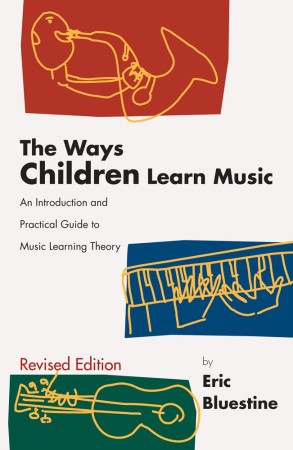
Before I begin, I’d like to preface by saying that there is a book about MLT that was not authored by Gordon that I would recommend reading BEFORE reading Gordon’s books. That book is Eric Bluestine’s The Ways Children Learn Music (GIA Publications | Sheet Music Plus | Amazon). Bluestine’s book offers an excellent, friendly primer of the premises of MLT and the shortcomings of conventional music education. I consider it a must-read for any music teacher. Read my full review of Eric’s book here.
Now, let’s get on to discussing Gordon’s books!
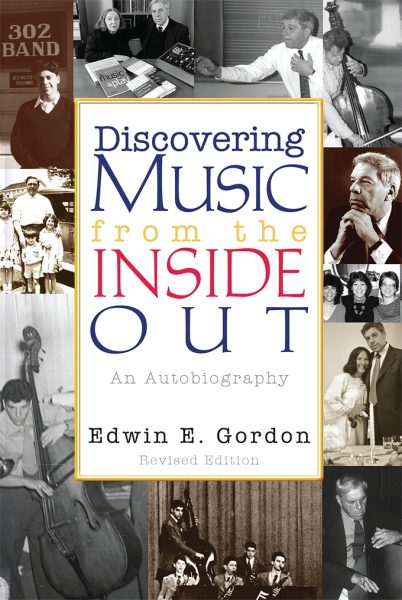 Discovering Music from the Inside Out: An Autobiography – Revised edition, by Edwin E. Gordon
Discovering Music from the Inside Out: An Autobiography – Revised edition, by Edwin E. Gordon
Published in 2006 and revised in 2014, Gordon’s autobiography is a wonderful read. It tells the story of his early life growing up as a boy, his careers as a working musician (including playing bass for the Gene Krupa Band), and his work as a professor and researcher. The book sheds light on the circumstances that prompted Gordon to examine the way music is conventionally taught, the nature of music aptitude, and how we learn music.
This book was fun to read, and I consider it a great starting point for anyone even mildly interested in Gordon’s Music Learning Theory. Bottom line: If you are interested in music education and you enjoy autobiographies, I would recommend this book to you.
Links: GIA Publications | Sheet Music Plus | Amazon
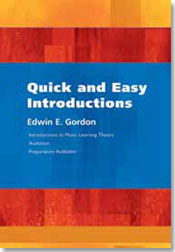 Quick and Easy Introductions: Introductions to Music Learning Theory, Audiation, Preparatory Audiation, Music Learning Theory for Newborn and Young Children, by Edwin E. Gordon
Quick and Easy Introductions: Introductions to Music Learning Theory, Audiation, Preparatory Audiation, Music Learning Theory for Newborn and Young Children, by Edwin E. Gordon
This pamphlet, first published in 2013, is available as a free order from GIA publications (just pay shipping) or as a free PDF download here. Unfortunately, the pamphlet is more jargon-y than ideal, in my opinion, for an introductory explanation into MLT for the layperson (whether parent or music teacher). However, the pamphlet does cover the main tenets of MLT is a concise format and is readily available at the click of a button, so I highly recommend checking it out to get your first taste of Gordon’s academic writing.
Link: GIA Publications
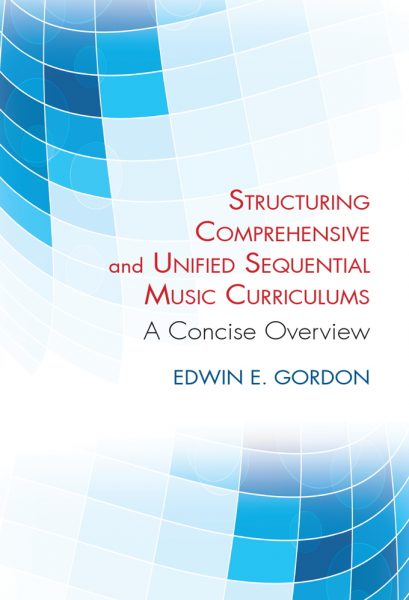 Structuring Comprehensive and Unified Sequential Music Curriculums: A Concise Overview, by Edwin E. Gordon
Structuring Comprehensive and Unified Sequential Music Curriculums: A Concise Overview, by Edwin E. Gordon
Published in 2015, this book is essentially a concise version of the next book addressed below. The book is organized into chapters addressing each of the give music readiness vocabularies: (1) listening, (2) performing (singing and chanting rhythms), (3) improvising, (4) reading, and (5) writing. In the “reading” chapter, there are some particularly convincing arguments supporting the address of listening, performing, and improvising vocabularies BEFORE introducing music notation. This book provides a helpful overview and specific instructions for ways teachers can build audiation skills in their students both before and during the introduction of music notation.
Bottom line: This is an excellent book for piano teachers or any music teachers who are interested in learning how to build musical skill in students apart from their instruments. The book will challenge your preconceived notions about music education and change your teaching for the better. Although this book does use a good amount of MLT terminology (as all of Gordon’s books do), it is more accessible than Gordon’s seminal “Learning Sequences In Music” text. This might be the best way to dive into Gordon’s academic style of writing if you are new to his MLT.
If you finish reading this book and are hungry for more specifics on teaching in this manner, I recommend next reading the book below.
Links: GIA Publications | Sheet Music Plus
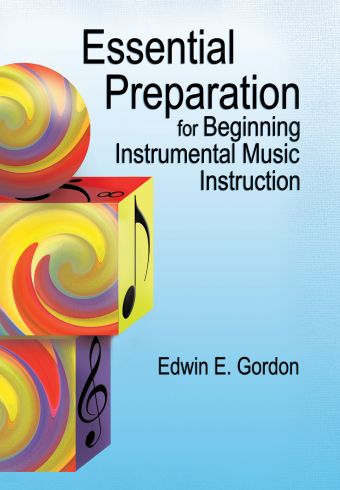 Essential Preparation for Beginning Instrumental Music Instruction, by Edwin E. Gordon
Essential Preparation for Beginning Instrumental Music Instruction, by Edwin E. Gordon
Published in 2010, this book addresses the musical readinesses Gordon believed students should have before beginning formal instruction in a given musical instrument. Each chapter of the book addresses one of the five music readiness vocabularies: (1) listening, (2) performing (singing and chanting rhythms), (3) improvising, (4) reading, and (5) writing. Gordon examines each of these vocabularies in the context of teaching rhythm as opposed to tonal content, as well as in the context of working with preschool ages as opposed to elementary school ages. Throughout the book, Gordon shares specific examples of activities teachers can use with their students to build these readinesses. The suggestions offered in this book point out a way towards the possibility of a teaching approach where students become musically well-equipped before beginning formal study on a chosen musical instrument.
Links: GIA Publications | Sheet Music Plus | Amazon
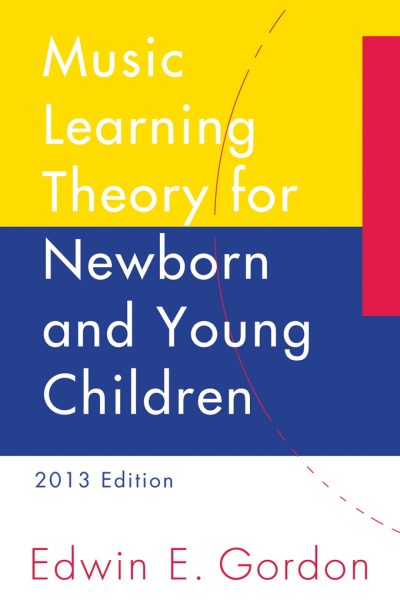 A Music Learning Theory for Newborn and Young Children (2003, 1997, 1990, 2013), by Edwin E. Gordon
A Music Learning Theory for Newborn and Young Children (2003, 1997, 1990, 2013), by Edwin E. Gordon
This is the text used for the Early Childhood Professional Development Levels Course offered through the Gordon Institute for Music Learning (GIML.org). If you are or wish to become an early childhood music educator who uses MLT principles, this is a book for you to read. I found this book to be slightly more accessible than the “Learning Sequences in Music” text and felt it gave me a better perspective of what my piano students would ideally know before beginning private lessons at the piano. If they don’t already have those skills, I can use principles from this book to help them gain those skills.
Read this book if you are interested in knowing more about what music learning looks like for babies and toddlers through preschool — before we get them as piano students. It will help you recognize when students do not yet have readiness for formal instruction and what you can do to help them gain the readiness they need.
Links: GIA Publications | Sheet Music Plus | Amazon
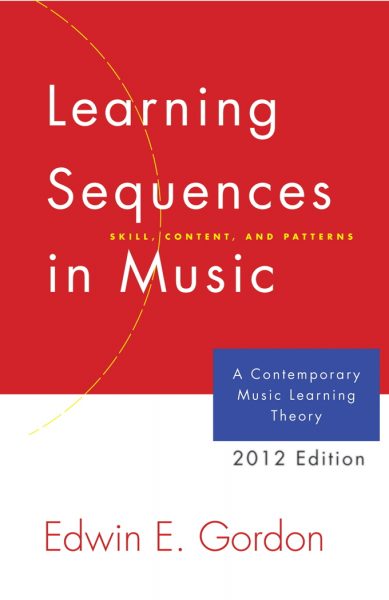 Learning Sequences In Music, 2012 Edition, by Edwin E. Gordon
Learning Sequences In Music, 2012 Edition, by Edwin E. Gordon
This is the text used for the Instrumental Music Professional Development Levels Courses (PDL courses) offered through the Gordon Institute for Music Learning (GIML.org). There have been many revisions since “Learning Sequences in Music” was first published in 1980. The 2012 edition is current. If you are serious about getting into MLT, you will want to purchase and study this book. It is Gordon’s seminal work, and is easily the most definitive, comprehensive book on Gordon’s MLT.
“Learning Sequences in Music” (LSM) is 400 pages in length and is academic reading. The easiest way to work through the book is to take one of GIML’s PDL courses, when you’ll have nightly reading assignments over two weeks and class time for discussion and questions with an instructor.
Also check out the accompanying 2007 Study Guide, the 2012 Study Guide Supplement, and the wonderful Learning Sequences in Music Lecture CDs (8-CD set) — consisting of 30-minute introductions by Dr. Gordon to each of the 15 chapters of his book. I would especially recommend the CD set. It is wonderful to hear Gordon’s voice as he explains and expounds upon the ideas presented in the book.
Links: GIA Publications | Sheet Music Plus | Amazon
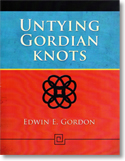 Untying Gordian Knots, by Edwin E. Gordon
Untying Gordian Knots, by Edwin E. Gordon
This is a short pamphlet published in 2011 consists of short chapters titled according to the concepts being discussed. This book is most useful as a reference handbook, as a way to look up a particular topic and refresh one’s memory on what Gordon has to say on the matter.
Links: GIA Publications | Sheet Music Plus | Amazon
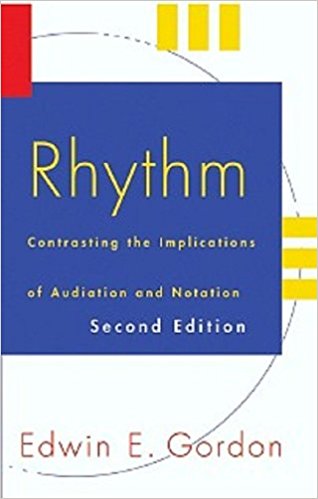 Rhythm: Contrasting the Implications of Audiation and Notation (Second Edition; CD included), by Edwin E. Gordon
Rhythm: Contrasting the Implications of Audiation and Notation (Second Edition; CD included), by Edwin E. Gordon
This book was first published in 2000, and the second edition was released in 2009. If you’ve already read Gordon’s LSM (above) and want to dive deeper into Gordon’s thoughts about rhythm in music, this is the book for you. It covers many of the main concepts from LSM while elaborating on the Gordon’s meter classifications, taxonomy of rhythm patterns, difficulty level taxonomy of rhythm patterns, rhythm solfege, and more. I thoroughly enjoyed working my way through this book.
Links: GIA Publications | Sheet Music Plus | Amazon
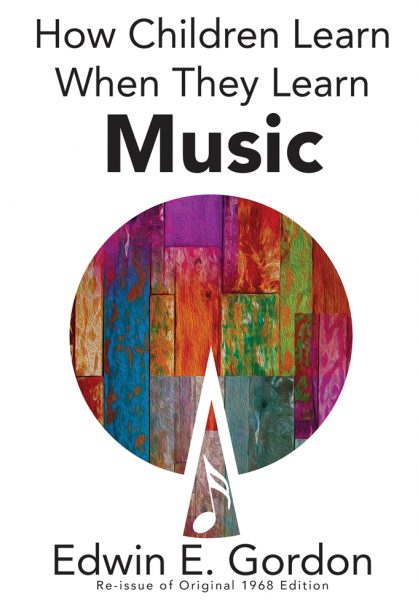 How Children Learn When They Learn Music, by Edwin E. Gordon
How Children Learn When They Learn Music, by Edwin E. Gordon
Written and self-published in 1968, this book was an early precursor to Gordon’s seminal “Learning Sequences in Music” text. Upon ordering “How Children Learn When They Learn Music”, I wondered whether this thin volume would be a good recommendation for those new to Gordon’s writings; however, I found it not to be the case.
When asked by GIA Publications to revise the book for reissuing in 2015 (the same year Gordon passed away in December), Gordon decided for the sake of historical point of view to preserve the book’s use of previous terminology dating from his early career. Examples include “tempo beat” instead of the newer “macrobeat”, “meter beat” instead of the newer “microbeat”, and “melodic rhythms” instead of “rhythm patterns”. Due to the use of older terminology and concepts, and the fact that this book was written before Gordon named and fully developed his foundational concept “audiation”, this book is best read, in my opinion, after first gaining familiarity with Gordon’s theories and terminology in their more mature forms. It’s better to first learn the current terms and concepts before the previous ones.
This is not to downplay the merit of the book. The book holds value for those already familiar with Gordon’s work and interested in knowing the origins of Gordon’s ideas fifty years later.
In short, read this book if you are already familiar with the MLT’s current terminology and you wish to gain a historical perspective of the evolution of Gordon’s ideas.
Links: GIA Publications | Sheet Music Plus | Amazon
Improvisation in the Music Classroom: Sequential Learning
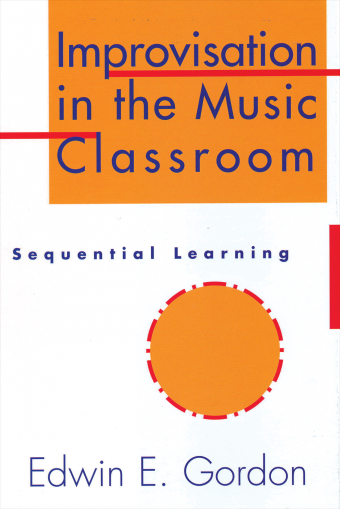
This book from 2003 offers guidance, based on Gordon’s observational and experimental research, on how to incorporate improvisation into the general music classroom. Each chapter or “part” focuses on a sequential step of the process: rhythm improvisation, tonal improvisation, melodic improvisation, and harmonic improvisation (specifically, Gordon addresses improvising a melody over a given chord progression).
Although a full-blown method is not provided within, Gordon does describe teaching techniques (i.e., how to teach) and sequential learning — in terms of which skills and content should be addressed before others (e.g., which rhythm, tonal, and harmonic functions should come before others).
Links: GIA Publications | Sheet Music Plus | Amazon
Basics of Vocal and Instrumental Harmonic Improvisation
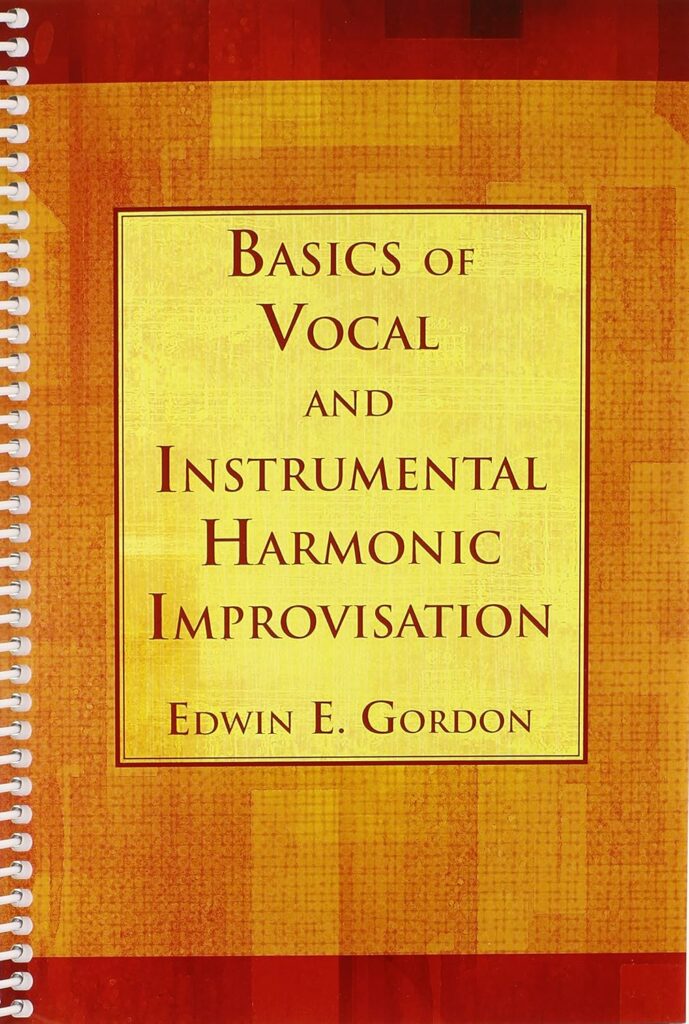
This book is similar in many ways to the previous book, but it was published ten years later (in 2013). While this book is more recent and therefore reflects the most recent version of Gordon’s ideas, the previous book in some ways is more complete, with more details. I suggest reading the two books together if improvisation is your interest.
Links: GIA Publications | Sheet Music Plus | Amazon
 The Aural / Visual Experience of Music Literacy: Reading and Writing Music Notation, by Edwin E. Gordon
The Aural / Visual Experience of Music Literacy: Reading and Writing Music Notation, by Edwin E. Gordon
This book discusses how to go about teaching students to read and write music after they have sufficient listening, performing, and improvisation readiness vocabularies. My recommendation is to wait to read this book until you’ve guided students through Aural/Oral, Verbal Association, and Partial Synthesis levels and are ready for more information about guiding your students through Symbolic Association and Composite Synthesis as they learn to read and write music notation.
Links: GIA Publications | Sheet Music Plus | Amazon
 Corybantic Conversations: Imagined Encounters between Dalcroze, Kodály, Laban, Mason, Orff, Seashore, and Suzuki, by Edwin E. Gordon
Corybantic Conversations: Imagined Encounters between Dalcroze, Kodály, Laban, Mason, Orff, Seashore, and Suzuki, by Edwin E. Gordon
“Corybantic Conversations” was published in 2009 as a creative venture on Gordon’s part to imagine what conversations would ensure if some of the greatest music education thinkers across the centuries — Dalcroze, Laban, Mason, Kodály, Suzuki, Orff, and Seashore — could engage directly with each other. The book is organized as a dialogue between those individuals, with each chapter addressing particular topics. If you are a fan of Gordon’s MLT, you will enjoy learning Gordon’s perspective on each individual’s lifework as well as Gordon’s imaginings of each individual’s perspective of the others — especially if you have experience with one or more of the music education thinkers aforementioned.
Links: GIA Publications | Sheet Music Plus | Amazon
Music Education Doctoral Study for the 21st Century, by Edwin E. Gordon
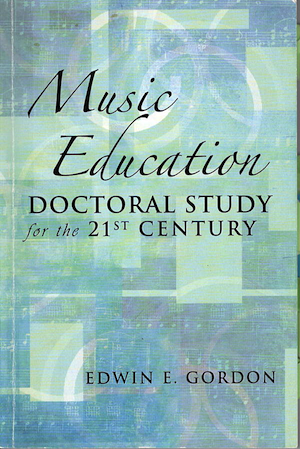
In this book published in 2011, Gordon calls for change for doctoral music education programs throughout the United States and the world. He states his intent is “to offer thoughts about how doctoral study in music education may be made more practical and reputable; that is, how to transform music education from a profession seemingly without an academic discipline into a profession comprising a well-defined, self-contained, comprehensive academic discipline” (p. ix).
Gordon recommends that music education faculty team up and coordinate to design a doctoral curriculums that are properly sequenced to benefit doctoral students and also serve as models for post graduates to guide elementary, middle, and secondary teachers in developing sequential curriculums for their own students. Gordon proposes 11 topics for university faculty to consider when it comes to developing a doctoral music education curriculum, each of which he addresses individually in its own chapter of the book. A few of these topics include: understanding audiation as the underpinning of musical understanding and goal of music education; teaching context and patterns rather than individual notes; using tonal and rhythm solfege systems that facilitate musical understanding; using harmonic improvisation to develop musicianship; using tests to improve instruction; and engaging in and interpreting research.
Links: GIA Publications | SheetMusicPlus.com | Amazon
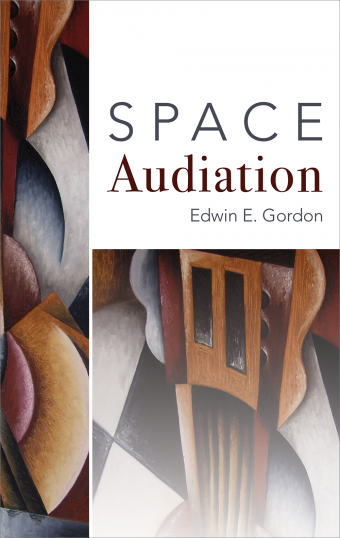 Space Audiation, by Edwin E. Gordon
Space Audiation, by Edwin E. Gordon
In this book, written when Gordon was 87 years old and afterwards published in 2015, Gordon describes his speculative ideas regarding what he calls “space audiation”. Space audiation refers to “a silent auditory response”, “an interior motion of the mind”, or a mental “feeling of movement or spatial motion” (pp. 25-26). Gordon posits that space audiation plays a critical role in the development of rhythmic, melodic, harmonic, improvisatory, creative, and expressive/interpretive skills. As told in the preface, Gordon is without objective research to support these concepts. However, Gordon considered this to be perhaps one of his most important monographs of his career. For the reader interested in knowing what Gordon, late in life, felt had been missed earlier in his lifework, this book presents fascinating considerations.
Links: GIA Publications | Sheet Music Plus | Amazon
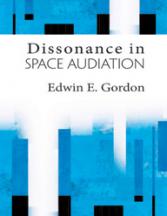
After reading the Space Audiation book, you may also be interested in reading the sequel, Dissonance in Space Audiation. This is Gordon’s last published monograph before he passed away at age 89 in 2015. GIA Publications offers this book as a free PDF download on their website. In this book, Gordon explores how space audiation impacts the artistic and expressive handling of various types of dissonance during music performance.
Link: GIA Publications, free PDF download
Thanks for reading! Stay tuned for future updates as I add more books to the list.
Related:
- My First Encounter with Dr. Edwin E. Gordon and his Music Learning Theory (MLT)
- What is “Music Learning Theory”, Exactly?
- What is Audiation, Exactly?
- 2024 Piano Level 2 Certification through the Gordon Institute for Music Learning – A peek into what taking a Professional Development Levels Course certification through GIML is like.
- YouTube: Music as a Language by Victor Wooten – A discussion of the similarities between learning language and learning music.
- Join the Facebook group, “Edwin E. Gordon and Music Learning Theory for Piano Teachers.” All welcome! Visit the group here and click the “Join Group” button to request to join the group.



Thanks Joy! I gave Bluestine’s book a go from your recommendation and enjoyed it – will return to it I’m sure.
I’m glad to hear you enjoyed it, Justin! Yes, it’s a good book for re-reading, too.
Thank you for putting this list, Joy! I am benefiting a lot from your enthusiasm of Gordon. I have read “The Ways Children Learn Music” and great to have other recommendations.
Thanks, Kristina. Glad to hear you too are interested in Gordon!
Thank you Joy! After years of Suzuki teaching, I was looking for ways to fill in the gaps for 3-4 year old beginners. Your blog led me to Gordon’s books which led me to Music Together training (all this since July 2018!). This review of all Gordon’s books if fantastic, as I seek to fill in the gaps for older students. I SO APPRECIATE your tireless quest to improvecand share.
That’s wonderful to hear, Kathryn! How exciting to have gotten Music Together training and be on this journey to better understand how we naturally learn music. Thanks so much for your comment!!